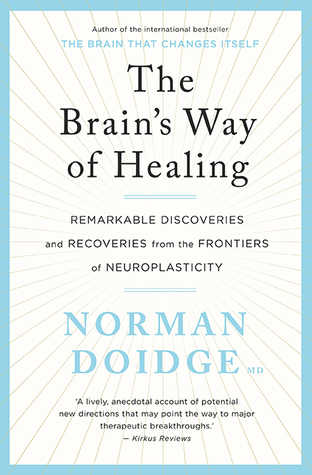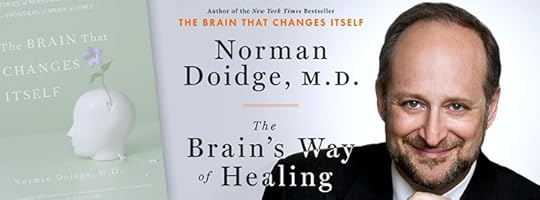What do you think?
Rate this book


432 pages, Paperback
First published January 27, 2015
The publicity tells us that The Brain’s Way of Healing will provide new hope for millions of unlucky sufferers. Hope is a tricky commodity however, and while some of us may find it heartening, for others it could be another turn of the fatal screw. The neuroplastic revolution is part of a contemporary stampede towards the moralisation of medicine: patients are encouraged to blame themselves for their sufferings, and to think that their chances of recovery depend not on random tricks of fate, or the luck or good judgment of their doctors, but on their own willpower and moral fibre. Sick people need to be cared for, but they also have a right to be left in peace.

"...I will show how this process of healing grows out of the highly specialized attributes of the brain—attributes once thought to be so sophisticated that they came at a cost: that the brain, unlike other organs, could not repair itself or restore lost functions.
This book will show that the reverse is true: the brain’s sophistication provides a way for it to repair itself and to improve its functioning generally."
"Neuroplasticity is the property of the brain that enables it to change its own structure and functioning in response to activity and mental experience.
That book also described many of the first scientists, doctors, and patients to make use of this discovery to bring about astonishing transformations in the brain. Until then, these transformations had been almost inconceivable, because for four hundred years, the mainstream view of the brain was that it could not change; scientists thought the brain was like a glorious machine, with parts, each of which performed a single mental function, in a single location in the brain. If a location was damaged—by a stroke or an injury or a disease—it could not be fixed because machines cannot repair themselves or grow new parts. Scientists also believed the circuits of the brain were unchangeable or “hardwired,” meaning that people born with mental limitations or learning disorders were in all cases destined to remain so. As the machine metaphor evolved, scientists took to describing the brain as a computer and its structure as “hardware” and believed the only change that aging hardware undergoes is that it degenerates with use. A machine wears out: use it, and lose it. Thus, attempts by older people to preserve their brains from decline by using mental activity and exercise were seen as a waste of time."
"Just as the discoveries of medication and surgery led to therapies to relieve a staggering number of conditions, so does the discovery of neuroplasticity. The reader will find cases, many very detailed, that may be relevant to someone who has, or cares or someone who has experienced, chronic pain, stroke, traumatic brain injury, brain damage, Parkinson’s disease, multiple sclerosis, autism, attention deficit disorder, a learning disorder (including dyslexia), a sensory processing disorder, a developmental delay, a part of the brain missing, Down syndrome, or certain kinds of blindness, among others. In some of these conditions, complete cures occur in a majority of patients. In other cases, illnesses that are moderate to severe can sometimes become milder. I shall describe parents who were told that their autistic or brain-damaged children would never complete a normal education, but who saw them do so, graduate, even go to university, become independent, and develop deep friendships. In other situations, an underlying serious illness remains, but its most troubling symptoms are radically reduced. In still others, the risk of getting an illness such as Alzheimer’s (in which the brain’s plasticity decreases) is significantly reduced (discussed in Chapters 2 and 4), and ways of increasing plasticity are introduced."